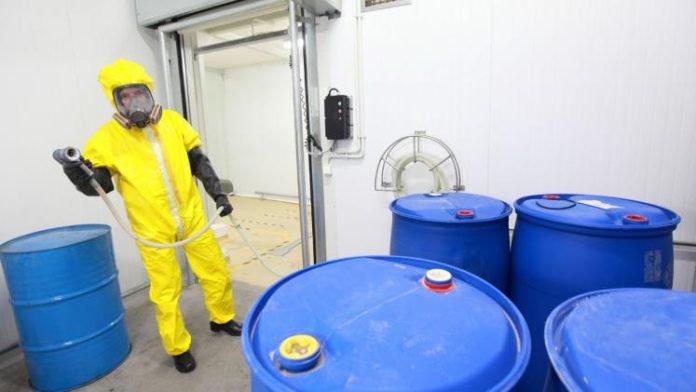In today’s rapidly evolving industrial landscape, ensuring workplace safety is paramount, particularly in environments where hazardous substances are present. The Dangerous Substances and Explosive Atmospheres Regulations (DSEAR) serve as a crucial framework for managing risks associated with dangerous substances, helping organizations safeguard their employees and assets. Conducting a thorough DSEAR risk assessment is not just a regulatory requirement; it is an essential practice that fosters a culture of safety and compliance within the workplace. By identifying potential sources of ignition and assessing the risks posed by explosive atmospheres, businesses can implement effective control measures to mitigate these dangers. This article delves into the key components of DSEAR risk assessment, outlining the steps needed to ensure adherence to regulations while promoting a safe working environment. Understanding the intricacies of DSEAR not only helps organizations comply with legal obligations but also enhances operational efficiency and reduces the likelihood of incidents that could lead to catastrophic consequences. As we explore the significance of DSEAR risk assessments, we will highlight best practices and strategies for effective implementation, empowering organizations to prioritize safety and protect their workforce in an increasingly complex regulatory landscape.
Understanding DSEAR Risk Assessment Requirements
Conducting a thorough DSEAR risk assessment is essential for identifying and mitigating risks associated with hazardous substances that can lead to fire or explosion in the workplace. This process involves evaluating the potential sources of ignition, the properties of the substances used, and the likelihood of an explosive atmosphere occurring. Organizations must systematically document and assess the findings to ensure compliance with legal requirements, thereby safeguarding employee health and promoting operational continuity.
Moreover, regular reviews and updates to the DSEAR risk assessment are critical, especially when there are changes in processes, equipment, or materials. Employers are required to involve employees in the assessment process, fostering a culture of safety awareness and accountability. By implementing effective control measures and establishing contingency plans, businesses not only adhere to DSEAR regulations but also create a safer working environment, ultimately enhancing overall productivity and morale.
Key Steps for Effective Risk Management
To achieve effective risk management, organizations should first prioritize the identification and analysis of potential hazards related to flammable substances and explosive environments. This involves a comprehensive evaluation of the workplace, including a detailed inventory of hazardous materials and the processes that utilize them. Following identification, the next step is to assess the level of risk associated with each identified hazard, considering factors such as the likelihood of an incident and the potential consequences. This assessment forms the basis for developing appropriate control measures, which may include engineering solutions, administrative policies, and employee training programs.
Communication is another essential component of effective risk management. Organizations must ensure that findings from the DSEAR risk assessment are clearly communicated to all employees, including the specific risks associated with their roles and the measures in place to mitigate those risks. Regular training sessions and updates on safety protocols foster an informed workforce capable of contributing to a safe operational environment. Additionally, establishing a mechanism for ongoing monitoring and feedback allows for continuous improvement in risk management practices, ensuring that organizations remain compliant with DSEAR regulations while safeguarding workplace safety.
Importance of Compliance for Workplace Safety
Compliance with safety regulations is crucial for maintaining a secure workplace environment, especially when dealing with hazardous materials and processes. By adhering to the requirements outlined in the DSEAR risk assessment, organizations can mitigate risks associated with explosive atmospheres and flammable substances. This not only protects employees from potential harm but also safeguards the organization against legal liabilities and financial implications arising from safety breaches. A commitment to compliance fosters a culture of safety, where employees recognize the importance of following established protocols and procedures.
Moreover, compliance is integral to maintaining operational continuity and enhancing overall productivity. Regular adherence to safety regulations ensures that workplaces are not subjected to costly shutdowns or penalties due to non-compliance. Training employees in DSEAR risk assessment findings and safety measures empowers them to actively participate in maintaining a safe work environment. Ultimately, prioritizing compliance not only fulfills legal obligations but also reinforces an organization’s reputation as a responsible employer, attracting talent and fostering trust within the community.
In conclusion, conducting a thorough DSEAR risk assessment is not only a regulatory requirement but also a critical step in safeguarding the health and safety of employees in environments where hazardous substances are present. By systematically identifying and evaluating risks, organizations can implement effective control measures that minimize the potential for accidents and ensure compliance with legislation. Furthermore, fostering a culture of safety and continuous improvement will not only enhance workplace safety but also contribute to overall operational efficiency. As businesses prioritize DSEAR compliance, they demonstrate a commitment to protecting their workforce and promoting a safer working environment for all.
